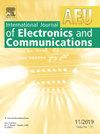Compact metal block-loaded cavity filter with parasitic mode suppression and extended stopband
IF 3.2
3区 计算机科学
Q2 ENGINEERING, ELECTRICAL & ELECTRONIC
Aeu-International Journal of Electronics and Communications
Pub Date : 2025-06-11
DOI:10.1016/j.aeue.2025.155878
引用次数: 0
Abstract
A compact cavity bandpass filter loaded with metal blocks is proposed in this paper. Two dual-mode resonators and one single-mode resonator work together to create a quasi-ellipse response. Each resonant cavity is loaded with metal blocks at the strongest point of the electric field of resonant modes to reduce size. Although the metal block in the dual-mode cavity introduces a parasitic mode, the single-mode resonator effectively suppresses it by weakening the energy propagation of that mode. Furthermore, the position of the metal block has less influence on the mode in dual-mode resonator and mode in single-mode resonator. This means that the resonant frequencies of these modes will be much higher due to the reduction of the cavity dimensions, expanding the filter’s stopband to with a suppression level better than 34 dB. An experimental prototype was fabricated and measured. The simulation and measurement results show good agreement, verifying the high out-of-band rejection characteristics of the proposed filter.
紧凑的金属块加载腔滤波器与寄生模式抑制和延长阻带
本文提出了一种紧凑的金属块腔带通滤波器。两个双模谐振器和一个单模谐振器一起工作,产生准椭圆响应。每个谐振腔在谐振模式电场的最强点处都装有金属块以减小尺寸。虽然双模腔中的金属块引入了寄生模式,但单模谐振器通过削弱该模式的能量传播有效地抑制了寄生模式。此外,金属块的位置对双模谐振器中的TE202模式和单模谐振器中的TE201模式的影响较小。这意味着由于腔尺寸的减小,这些模式的谐振频率将高得多,将滤波器的阻带扩展到2.17×f0,抑制水平优于34 dB。制作了实验样机并进行了测量。仿真结果与实测结果吻合良好,验证了该滤波器的高带外抑制特性。
本文章由计算机程序翻译,如有差异,请以英文原文为准。
求助全文
约1分钟内获得全文
求助全文
来源期刊
CiteScore
6.90
自引率
18.80%
发文量
292
审稿时长
4.9 months
期刊介绍:
AEÜ is an international scientific journal which publishes both original works and invited tutorials. The journal''s scope covers all aspects of theory and design of circuits, systems and devices for electronics, signal processing, and communication, including:
signal and system theory, digital signal processing
network theory and circuit design
information theory, communication theory and techniques, modulation, source and channel coding
switching theory and techniques, communication protocols
optical communications
microwave theory and techniques, radar, sonar
antennas, wave propagation
AEÜ publishes full papers and letters with very short turn around time but a high standard review process. Review cycles are typically finished within twelve weeks by application of modern electronic communication facilities.

 求助内容:
求助内容: 应助结果提醒方式:
应助结果提醒方式:


